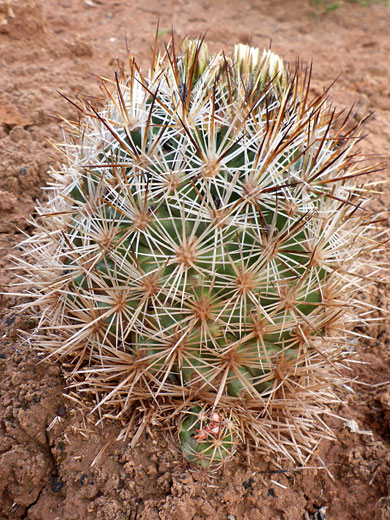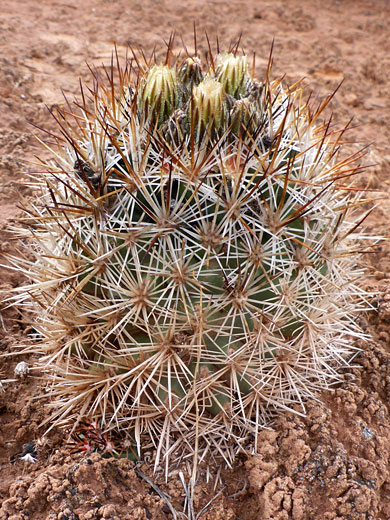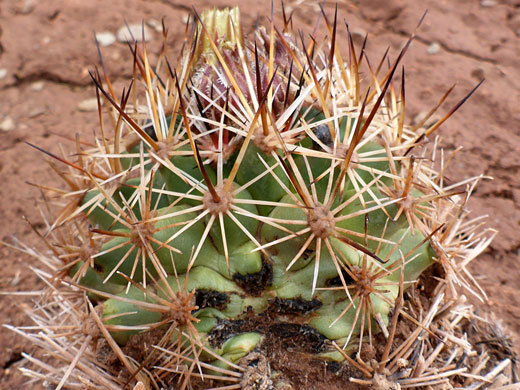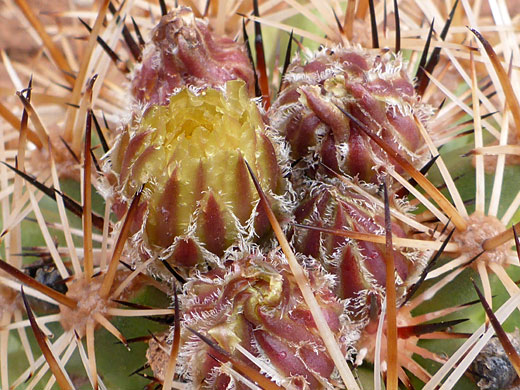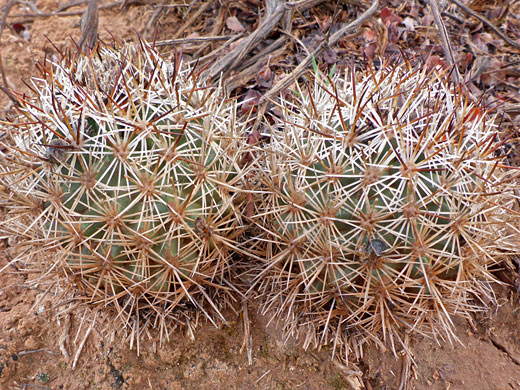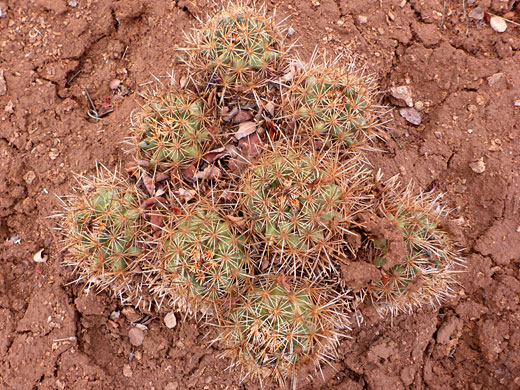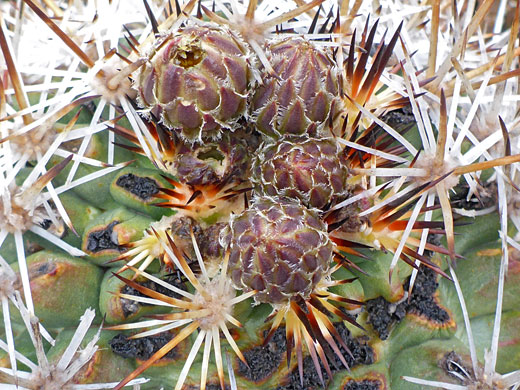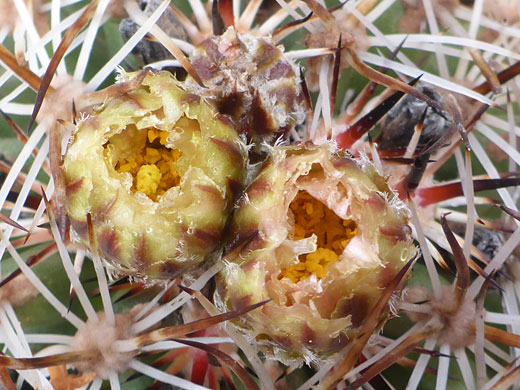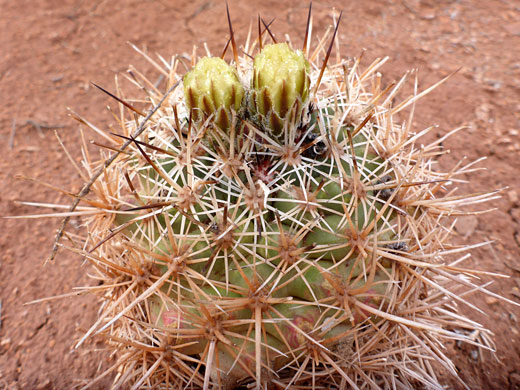Scientific name:
Pediocactus sileri
Common name:
Siler's pincushion cactus, gypsum cactus
Range:
A small area either side of the Arizona-Utah border, centered on Fredonia and Colorado City
Form:
Globes or cylinders, solitary or few-branched
Habitat:
Sandy or clayish (gypsum) soils derived from the Moenkopi Formation, in particular the Shnabkaib unit
Flowers:
Yellow to pale brown, appearing in the spring. Outer tepals are long-fringed

Distribution map for pediocactus sileri
Pediocactus sileri is a rare and threatened species, found only in a narrow band either side of the Arizona-Utah border, growing in clayish or sandy soils of the Moenkopi Formation; on low, undulating hills, at elevations between 3,000 and 5,000 feet.
The spherical, egg-shaped or cylindrical stems can be relatively large, up to 4 inches in diameter and 10 inches tall. Radial and central spines are well-differentiated; the former, between 11 and 15 per areole, are around half an inch long, while the latter, between three and seven, are noticeably longer, one inch or more. Radial spines are all-white, central spines are brown when young, becoming pale gray as they age.
Flowers, appearing at the top of the plant, have brownish outer tepals, paler along the margins, and pale yellow inner tepals, crossed with darker veins. Stamens and stigma are yellow. The outer tepals, and the scales along the floral tube beneath, are irregularly fringed.
The spherical, egg-shaped or cylindrical stems can be relatively large, up to 4 inches in diameter and 10 inches tall. Radial and central spines are well-differentiated; the former, between 11 and 15 per areole, are around half an inch long, while the latter, between three and seven, are noticeably longer, one inch or more. Radial spines are all-white, central spines are brown when young, becoming pale gray as they age.
Flowers, appearing at the top of the plant, have brownish outer tepals, paler along the margins, and pale yellow inner tepals, crossed with darker veins. Stamens and stigma are yellow. The outer tepals, and the scales along the floral tube beneath, are irregularly fringed.
All Contents © Copyright The American Southwest | Comments and Questions | Contribute | Affiliate Marketing Disclosure | Site Map




